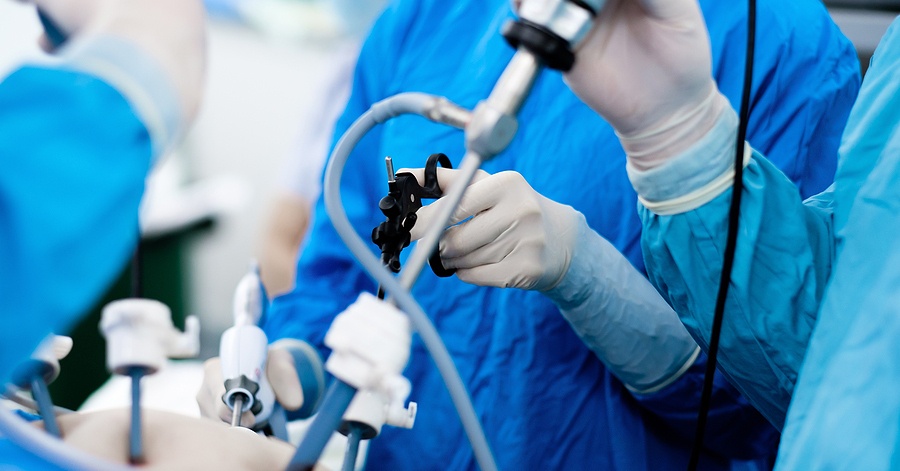What Is the Most Minimally Invasive Fistula Surgery?

An anal fistula is a painful condition that requires surgical correction. Fistula surgery has a reputation for being complicated and risky. Facing the possibility of a complex surgery might have you wondering whether it would be better to just keep suffering through your fistula symptoms.
You don’t have to live with a fistula forever. The fear of surgery shouldn't keep you from getting the help you need. Instead, you can turn to minimally invasive fistula surgery to resolve your condition. A minimally invasive procedure can be a safe, quick and effective way to resolve your anal fistula.
Common Surgery Options for Anal Fistula
One standard treatment for an anal fistula is a surgical procedure called a fistulotomy. The fistula tract is cut open, cleaned out and then held open with stitches. The goal of this approach is for the fistula to heal from the inside out.
A fistulectomy may be used in more complicated cases. Instead of just opening the tract, this procedure involves removing all of the affected tissue.
Some doctors perform variations on these two basic surgeries. One option is to place a seton band to encourage draining before the surgery. Another is to create a rectal flap that can be used to cover the surgical wound.
Both fistulotomies and fistulectomies present risks. One of the biggest concerns is damage to the anal sphincter muscle. Cutting this muscle could lead to fecal incontinence. Sometimes, doctors perform these surgeries in stages to reduce the chance of sphincter damage.
Even if all goes well, recovery from a fistulotomy or a fistulectomy can take several weeks. Patients may experience pain and discomfort during that time.
In this video, a doctor discusses some of the challenges of fistula surgery:
About Minimally Invasive Surgery
Perhaps you’ve heard about the concept of minimally invasive surgery. That’s when doctors perform a surgical procedure using advanced techniques that keep incisions to a minimum. In some cases, they may be able to treat conditions without making any cuts at all.
Minimally invasive surgeries are becoming increasingly popular for all sorts of medical issues. For one thing, these procedures often boast shorter recovery times than their traditional counterparts. Also, they may come with a lower risk of infection.
Minimally Invasive Fistula Surgery
Considering the drawbacks of traditional fistula surgery and the benefits of minimally invasive procedures, you may wonder if there’s an alternative to fistulotomies and fistulectomies. Good news: There is!
Today, doctors use a variety of minimally invasive fistula procedures to address this condition. Some fill the fistula tract with protein glue. Others use plugs made of collagen. Unfortunately, these options don’t always produce long-term results.
Don’t take that to mean that there’s no hope for a minimally invasive way to take care of your fistula problem. Rather, you just have to find the right method.
The best approach to minimally invasive fistula treatment doesn’t involve filling the fistula tract. Rather, it seals the tract shut. What’s the secret? Laser ablation.
In laser fistula surgery, a doctor inserts a special laser instrument into the fistula tract. Once the tool reaches the far end of the fistula, the doctor slowly withdraws it. As the probe moves backward through the tract, it emits energy in a 360-degree pattern.
The laser energy provided by the NeoLaser neoV1470 destroys the lining of the tract but is gentle on the surrounding tissue. The tract shrinks as the sides close in on themselves. As the ablated tissue heals, the resulting scar tissue will keep the former fistula sealed shut.
Benefits of Minimally Invasive Fistula Treatment
If you choose laser treatment for your anal fistula, the doctor may be able to avoid cutting you open. While doctors sometimes use a few stitches to close up the end of the tract after applying the laser energy, there aren’t any incisions needed for this procedure.
As a result, your recovery time will likely be faster than it would be after a fistulectomy or a fistulotomy. A more involved surgery can require weeks of recuperating. With laser surgery, you might feel better within a significantly shorter period of time.
Another key benefit of laser surgery is that damage to the sphincter is much less likely. That reduces the chance of developing incontinence after the procedure.
Finally, laser surgery can be an effective treatment method for an anal fistula. Studies have shown a first-time success rate above 64%. And unlike plugs and glues, which may lose their effectiveness after a while, successful laser surgery could rid you of your fistula troubles for good.
In many cases, it makes sense to try this minimally invasive approach before resorting to more complicated measures. If additional treatment is needed, a second laser procedure may be performed, or patients can opt for another type of surgery.
Choosing Your Fistula Procedure
When it comes to fistula treatment, you have options. While complex surgeries are a common approach for dealing with this condition, minimally invasive laser treatment could be the better choice for you. Consult a colorectal specialist to find out whether you are a good candidate for this procedure.
We can help you find the right specialist for your fistula treatment. Our Adler MicroMed Find a Doctor page will point you to surgeons in your area who correct anal fistulas with neoLaser instruments. With a specialist’s guidance, you can decide whether minimally invasive fistula surgery is right for you.
As with all medical issues, your physician is the ultimate source as to what procedure best fits your needs. Discuss all options and get a second opinion if you have any doubts. These articles are intended to be a source of general information only.
